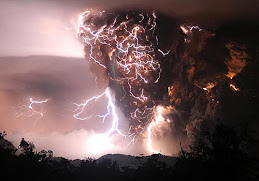
Sunday, January 31, 2010
Shanghai market likely peaked
Friday, January 29, 2010
Market update
Markets have been trading down in the last week. All indications point to a top in the market rally and a coming correction. This correction should be complemented by a dollar and bond rally. Commodities and emerging markets will come under heavy pressure, while developed markets and blue chips will outperform (although they will still track the market lower).
2010 is going to be a "corrective" year but not like 2008. The trillions of dollars sloshing around the globe courtesey of helicopter Ben should provide support to asset markets. However, markets are currently severely overbought. Future earnings should likely disappoint. This rally was partly driven be inventory restocking, which is now over. We went from an oversold position in March 2009 to currently what is an overbought position.
2010 is going to be a "corrective" year but not like 2008. The trillions of dollars sloshing around the globe courtesey of helicopter Ben should provide support to asset markets. However, markets are currently severely overbought. Future earnings should likely disappoint. This rally was partly driven be inventory restocking, which is now over. We went from an oversold position in March 2009 to currently what is an overbought position.
Saturday, January 9, 2010
David Rosenberg quotations

"No doubt that we are seeing modestly positive growth in the economy and that the pace of job declines is moderating. We won’t quibble with the rose-coloured glass crowd on that. But the extent of any improvement has to be viewed in the perspective of the vast amount of fiscal and monetary resources that have been deployed to-date to try and bring the economy out of its malaise. If indeed the economy is fully out of recession then that first quarter of positive growth normally is 7.0% at an annual rate, not the pathetic 2.2% rate posted for the third quarter. And, considering that the Fed began to ease monetary policy back in the summer of 2007, what is normal typically 2½ years after the first rate cut is that real GDP is humming along at a 5.0% annual rate and employment isn’t declining at a slower rate but is booming. The fact that that the private domestic demand is still so stagnant following the greatest experiment with fiscal and monetary ease in recorded history, we have to admit, leaves us more than just a tad worried over the macro outlook and beyond."
"We started the decade with a national payroll level of 130.8 million. We finished the decade practically unchanged at 130.9 million. Meanwhile, the total pool of available labour rose from 146 million to 159 million. In other words, we have the same number of jobs today as we did a decade ago, and yet we also have 13 million more people competing for them. It was more than just a lost decade for the equity market. It was a lost decade for the labour market."
Wednesday, January 6, 2010
World currencies measured in gold
Gold retains its purchasing power. This is why it is considered "real money", unlike fiat currencies. Therefore when the gold price moves "up", it isn't really increasing in value. It is simply compensating for the drop in value of the respective fiat currency- be it the US dollar, Euro, or Yen. The following charts illustrate how well gold has performed against many of the world's major fiat currencies over the last decade. All these major currencies have lost much of their purchasing power- even the so called 'strong currencies' such as the Australian dollar and Canadian dollar.
http://jsmineset.com/wp-content/uploads/2009/12/Gold-in-assorted-currencies-2009-year-end.pdf
http://jsmineset.com/wp-content/uploads/2009/12/Gold-in-assorted-currencies-2009-year-end.pdf
Subscribe to:
Comments (Atom)

